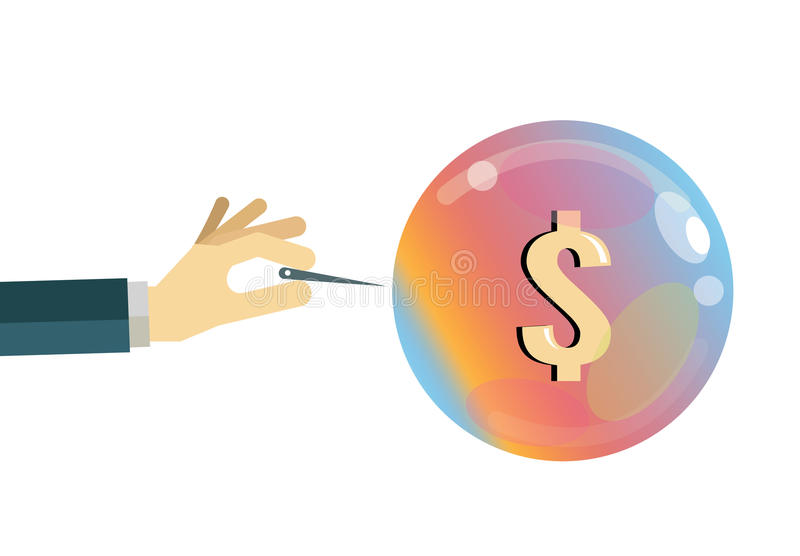
Dow Jones stocks may be worth a look if you're considering investing in the stock markets. This index is one among the most established stock indices. It is frequently used as an indicator of the U.S. state of the economy. This index is heavy and can have an impact on the financial markets worldwide.
Index price-weighted
A price-weighted index is a way to track changes in the stock market. The Dow Jones index ranks the companies according to the stock's price. The weight of a stock is determined by its price. A price-weighted index can't accurately measure growth, or decrease. It can also be biased towards the highest-priced stocks.
The Dow Jones price-weighted index is not widely used because its value is not based on the market's overall change, but investors may still find it useful for tracking average stock prices. The index is weighted on stock prices and the more expensive stocks will have a greater impact on its overall performance.

Comprised of publicly traded businesses
The Dow Jones is a group of stocks that comes from different companies. Companies that make up the Dow are selected based upon their financial performance. The index is currently favoring technology and healthcare companies. The Dow also includes Chevron and Bank of America, Alcoa (HP), Sears and General Electric. The Dow index consists of 30 companies. They can either represent the entire industry or just a particular market.
The Dow Jones index measures price, not market capitalization, and is therefore price-weighted. This means that if one company's shares go up, it will have an impact on the index.
Well-known companies
The Dow Jones index, a collection that includes many of world's most-respected companies, is an equities portfolio. These stocks are a solid investment base that can be trusted in difficult times. These stocks are often leaders in their industries and have strong balance sheets making them excellent candidates for long-term investment. These are the top stocks included in the index.
The Dow Jones index is a popular method to measure the direction of stock markets. It tracks the performance of 30 major, publicly traded companies. The better the index, it indicates that the market overall is performing well. Likewise, when the index falls, most stocks will lose money.

Positions on the leading market
The Dow Jones Leading Market Positions Index (price-weighted) is an index that tracks the performance across large companies from a variety sectors. The Dow Index is typically made up of mature, well-known firms with high market positions. Nearly all Dow stocks are megacap stocks. They are also varied in their nature and cover a range of sectors.
Bond analysts frequently favor these bonds.
Dow Jones stocks could be an attractive investment vehicle for investors who are looking for low risk. This index tracks 30 of the biggest U.S. companies and tends towards large-cap stocks. The S&P 500 doesn't include Dow stocks, and it includes companies of all sizes.
The Dow Jones Industrial Average (excluding utilities, transportations) is smaller than S&P 500. It comprises 30 stocks. Its criteria for inclusion include market capitalization, good reputation, and sustained growth. The index does not include transportation companies.
FAQ
Is stock marketable security a possibility?
Stock can be used to invest in company shares. This is done through a brokerage that sells stocks and bonds.
You can also invest in mutual funds or individual stocks. There are more than 50 000 mutual fund options.
The main difference between these two methods is the way you make money. Direct investment allows you to earn income through dividends from the company. Stock trading is where you trade stocks or bonds to make profits.
Both cases mean that you are buying ownership of a company or business. But, you can become a shareholder by purchasing a portion of a company. This allows you to receive dividends according to how much the company makes.
With stock trading, you can either short-sell (borrow) a share of stock and hope its price drops below your cost, or you can go long-term and hold onto the shares hoping the value increases.
There are three types: put, call, and exchange-traded. Call and Put options give you the ability to buy or trade a particular stock at a given price and within a defined time. ETFs are similar to mutual funds, except that they track a group of stocks and not individual securities.
Stock trading is very popular because investors can participate in the growth of a business without having to manage daily operations.
Stock trading can be very rewarding, even though it requires a lot planning and careful study. To pursue this career, you will need to be familiar with the basics in finance, accounting, economics, and other financial concepts.
What is a Stock Exchange exactly?
Companies can sell shares on a stock exchange. This allows investors and others to buy shares in the company. The market sets the price of the share. It is often determined by how much people are willing pay for the company.
Stock exchanges also help companies raise money from investors. To help companies grow, investors invest money. Investors purchase shares in the company. Companies use their money in order to finance their projects and grow their business.
Many types of shares can be listed on a stock exchange. Some of these shares are called ordinary shares. These shares are the most widely traded. Ordinary shares are bought and sold in the open market. Shares are traded at prices determined by supply and demand.
Preferred shares and debt securities are other types of shares. Preferred shares are given priority over other shares when dividends are paid. A company issue bonds called debt securities, which must be repaid.
How can people lose money in the stock market?
The stock market is not a place where you make money by buying low and selling high. It is a place where you can make money by selling high and buying low.
The stock market is for those who are willing to take chances. They may buy stocks at lower prices than they actually are and sell them at higher levels.
They want to profit from the market's ups and downs. But they need to be careful or they may lose all their investment.
Statistics
- The S&P 500 has grown about 10.5% per year since its establishment in the 1920s. (investopedia.com)
- Ratchet down that 10% if you don't yet have a healthy emergency fund and 10% to 15% of your income funneled into a retirement savings account. (nerdwallet.com)
- For instance, an individual or entity that owns 100,000 shares of a company with one million outstanding shares would have a 10% ownership stake. (investopedia.com)
- Even if you find talent for trading stocks, allocating more than 10% of your portfolio to an individual stock can expose your savings to too much volatility. (nerdwallet.com)
External Links
How To
How to open a Trading Account
To open a brokerage bank account, the first step is to register. There are many brokers that provide different services. Some charge fees while others do not. Etrade (TD Ameritrade), Fidelity Schwab, Scottrade and Interactive Brokers are the most popular brokerages.
Once you have opened your account, it is time to decide what type of account you want. These are the options you should choose:
-
Individual Retirement Accounts (IRAs).
-
Roth Individual Retirement Accounts
-
401(k)s
-
403(b)s
-
SIMPLE IRAs
-
SEP IRAs
-
SIMPLE SIMPLE401(k)s
Each option comes with its own set of benefits. IRA accounts provide tax advantages, however they are more complex than other options. Roth IRAs are a way for investors to deduct their contributions from their taxable income. However they cannot be used as a source or funds for withdrawals. SIMPLE IRAs are similar to SEP IRAs except that they can be funded with matching funds from employers. SIMPLE IRAs can be set up in minutes. Employers can contribute pre-tax dollars to SIMPLE IRAs and they will match the contributions.
You must decide how much you are willing to invest. This is known as your initial deposit. You will be offered a range of deposits, depending on how much you are willing to earn. For example, you may be offered $5,000-$10,000 depending on your desired rate of return. This range includes a conservative approach and a risky one.
Once you have decided on the type account you want, it is time to decide how much you want to invest. Each broker has minimum amounts that you must invest. These minimums vary between brokers, so check with each one to determine their minimums.
Once you have decided on the type of account you would like and how much money you wish to invest, it is time to choose a broker. Before you choose a broker, consider the following:
-
Fees – Make sure the fee structure is clear and affordable. Brokers will often offer rebates or free trades to cover up fees. However, many brokers increase their fees after your first trade. Be cautious of brokers who try to scam you into paying additional fees.
-
Customer service - Find customer service representatives who have a good knowledge of their products and are able to quickly answer any questions.
-
Security - Look for a broker who offers security features like multi-signature technology or two-factor authentication.
-
Mobile apps: Check to see whether the broker offers mobile applications that allow you access your portfolio via your smartphone.
-
Social media presence - Check to see if they have a active social media account. It might be time for them to leave if they don't.
-
Technology - Does it use cutting-edge technology Is the trading platform easy to use? Are there any glitches when using the system?
Once you have decided on a broker, it is time to open an account. Some brokers offer free trials while others require you to pay a fee. After signing up, you will need to confirm email address, phone number and password. Next, you'll have to give personal information such your name, date and social security numbers. You will then need to prove your identity.
Once verified, your new brokerage firm will begin sending you emails. It's important to read these emails carefully because they contain important information about your account. You'll find information about which assets you can purchase and sell, as well as the types of transactions and fees. Also, keep track of any special promotions that your broker sends out. These promotions could include contests, free trades, and referral bonuses.
The next step is to open an online account. An online account can be opened through TradeStation or Interactive Brokers. These websites can be a great resource for beginners. To open an account, you will typically need to give your full name and address. You may also need to include your phone number, email address, and telephone number. After you submit this information, you will receive an activation code. Use this code to log onto your account and complete the process.
You can now start investing once you have opened an account!